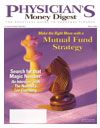Publication
Article
Physician's Money Digest
Say, "Si" to Superb, Inexpensive Spanish Wines
Author(s):
Forbes
For years, France, Italy, andCalifornia have dominated thewine market, while Spain, betterknown for bullfighting thanfor winemaking, has sat by the wayside.In truth, Spain has been producing winefor centuries and, according to ,makes about as much wine annually asItaly and France. In 2003, Spain provided17% of the world's wine production,compared with 9% from the UnitedStates. Up until recently, Spanish winehas been acknowledged simply for itsgood value and not for quality like itsEuropean counterparts.
But in recent years, wine connoisseurshave praised the Spanish brandsfor their excellence, and bottles arebecoming more prevalent on the winelists of upscale restaurants. The deathof dictator Francisco Franco in 1975ended years of political and economicrepression, leading to Spain joining theEuropean Union, and thus exposingSpanish wineries to the internationalmarket. The current Spanish wine revolutionwas led by a new generation ofwine makers who were bold enough totry new styles of wine based on nativegrapes blended with flavors (such asvibrant fruits and new oak) that hadnever been experienced before.
bodegas
bodegueros
tinajas
With 40 recognized wine regionslocated all over Spain, there is a widevariety of fine wines to choose from,such as rich reds from Rioja, wonderfulwhites from Rueda, and sensationalsherries from Jerez. Spanish wineries,known as , and their wine makers,known as , use eithertraditional methods (such as fermentingthe wine in clay pots known as )or modern techniques (such as temperature-controlled stainless steel vats) intheir wine production, creating distinctivewines that are completely unique.
If you've been a wine enthusiast forseveral years, you should be aware thata higher price on a bottle doesn't meanthat it's better than a less-expensivecounterpart. Oftentimes, you'll simplybe paying for a label with little regardfor the wine itself. Wine is about taste,and a $12 bottle of cabernet sauvignonmay be much more pleasing to yourpalate than a $100 bottle. You justhave to try and see for yourself.
Forbes
writer Nick Passmore, insearch of excellent Spanish wines atlow prices, offers up the following outstandingvintages from Spain thatwon't drain your wallet:
•Lagar de Cervera Albariño2003. From the Rias Baixas region, this100% Albariño white is loaded withsucculent peach and melon flavor. ($19)
•Borsao Reserva 2001. Thisrobust red from the Campo de Borjaregion is made up of different internationalgrapes—50% Garnacha,20% Tempranillo, and 20% CabernetSauvignon. ($14)
•Aura Verdejo 2004. An elegantwhite wine from the Rueda region, thisapple-and pear-flavored vintage is madeup of 99% Verdejo and 1% SauvignonBlanc. ($18)
•Coto de Imaz Reserva 2000.This well-rounded red is from the number-one-selling wine brand in Spain.Made of 100% Tempranillo from theRioja region, it bursts with fresh fruitflavor, and a touch of vanilla and oaktones. ($18)
•Viña Godeval 2004. A first-ratewhite from the Valdeorras Valley inGalicia, this 100% Godello vintage isrich and nutty, and, according to Passmore,can compete with the finest SauvignonBlancs from New Zealand andCalifornia. ($15)
